A terrarium or vivarium without hardscape is like cooking a meal but not seasoning it.
Will it fill you up? Of course. But will it ever truly satisfy?
Hardscape is the flavor, the spice, the metaphorical salt!
Whether you prefer a neat-and-tidy polished look or a wild organic build, hardscape gives scale, texture, and contrast to a piece.
In this article, I’ll take you through the best terrarium rock and wood options and teach you how to use and style them. If you’re ready to geek out about rocks and wood, you’ve come to the right place!
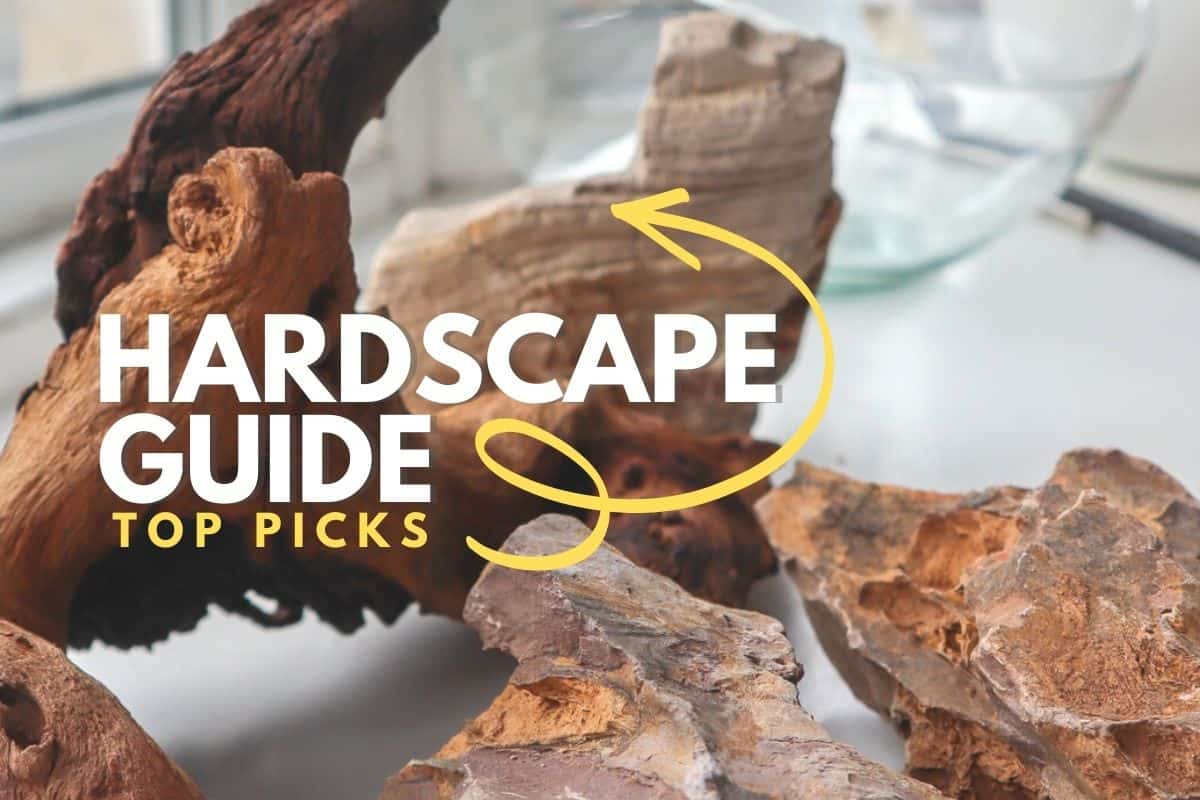
Terrarium Tribe is reader-supported. When you purchase through links on our site, we may earn an affiliate commission (at no further cost to you). 💜
Terrarium Hardscape 101
Okay. We’re jumping straight into the deep end with the age-old question: can’t you just put any rock or wood into a terrarium?
Well, no. You can’t…
As the aquascaping industry has found out (through much trial and error), there are some parts of nature we don’t want to bring into our setup.
The whole point of a terrarium is to create a balanced ecosystem. The wrong hardscape can upset this delicate balance in various surprising ways.
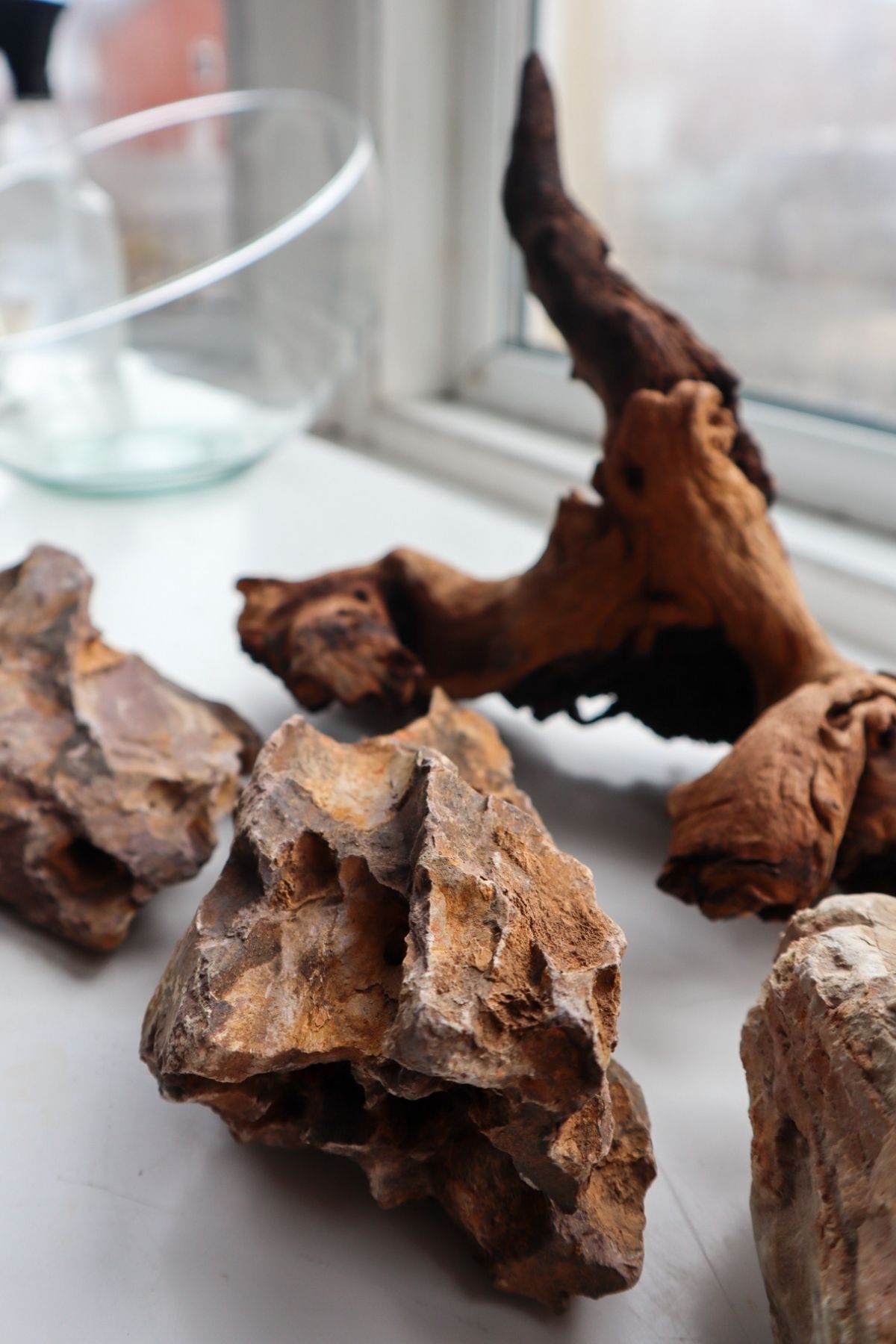
Specifically, the three things we need to be aware of are:
- 1. Decomposition. Rotting wood or any other organic matter isn’t a particularly good idea in a closed ecosystem – unless you have some trusty isopods on board to take care of it, of course. Softwoods tend to break down much more easily, so hardwoods are a better fit long term.
- 2. Toxicity. Certain saps and pesticides found in certain woods can be detrimental to any animals in your build and potentially even plants.
- 3. Chemical alteration. Some rocks aren’t waterproof. They can leech compounds that change the pH of the water within a system. Igneous rocks won’t, but some sedimentary and metamorphic rocks will, though sometimes the effect is minimal.
Ultimately, you really need to know what you’re putting in your build, or it could spell disaster.
Without further ado, let’s get straight into our hardscape top pics, which will work harmoniously in your project.
Terrarium Rocks
When I was younger and asked what I wanted to do when I grew up, I don’t think I’d ever imagined that I would be here, giddily talking to you lovely people about rocks.
In fact, I think my younger self would have thought of me as incredibly lame. But here we are.
Here are my three top picks for the best terrarium rocks:
- 1 | Dragon Stone/Ohko Stone. If I had to choose a favorite, it would be Dragon Stone. It’s a stunning earthy stone, a fabulous jagged structure and it’s incredibly easy to work with. It’s lightweight and relatively soft, making it easier to break into smaller pieces, and because it has a neutral pH, it’s completely inert.
Read more about this wonderful stone and how to style it in our Dragon Stone (Ohko) deep dive.
👉 Shop our Dragon Stone chunks.
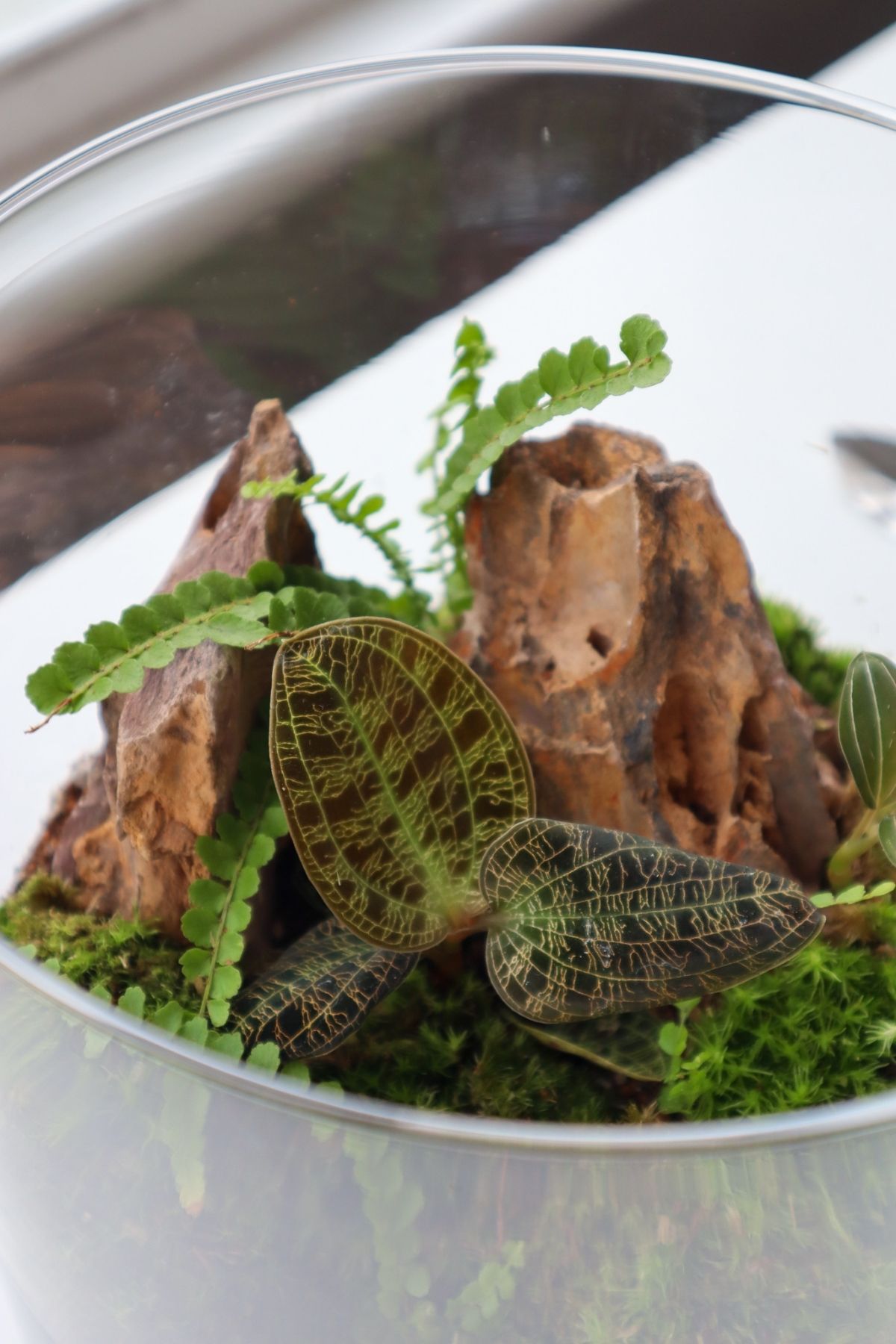
- 2 | Seiryu Stone. This stunning Japanese rock is about as pretty as they come. With a gorgeous blueish-grey color and white calcite veins, what’s not to love? It’s extremely heavy and hard, so it works best as a showstopping centerpiece.
Learn more about it – and how to use it in a terrarium – in our guide to Seiryu Stone.
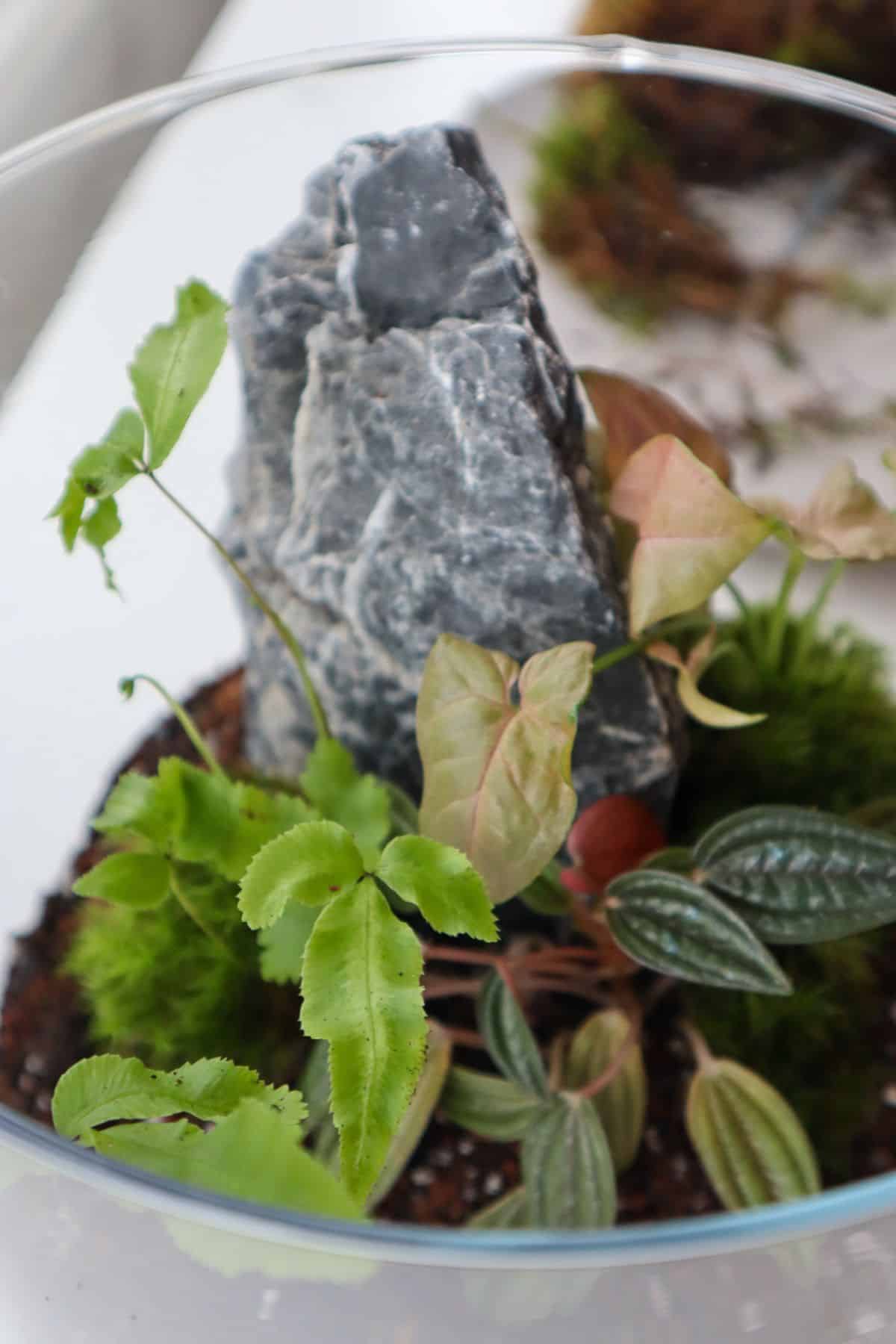
- 3 | Gobi Desert Stone. Originating from the Gobi Desert across Mongolia and China, this stone certainly brings an exotic feel to any terrarium or vivarium. With a glorious sandy color and somehow both linear and curved shapes, I’m certain you won’t be able to resist its charm.
👉 Shop Gobi Stone on Buceplant.
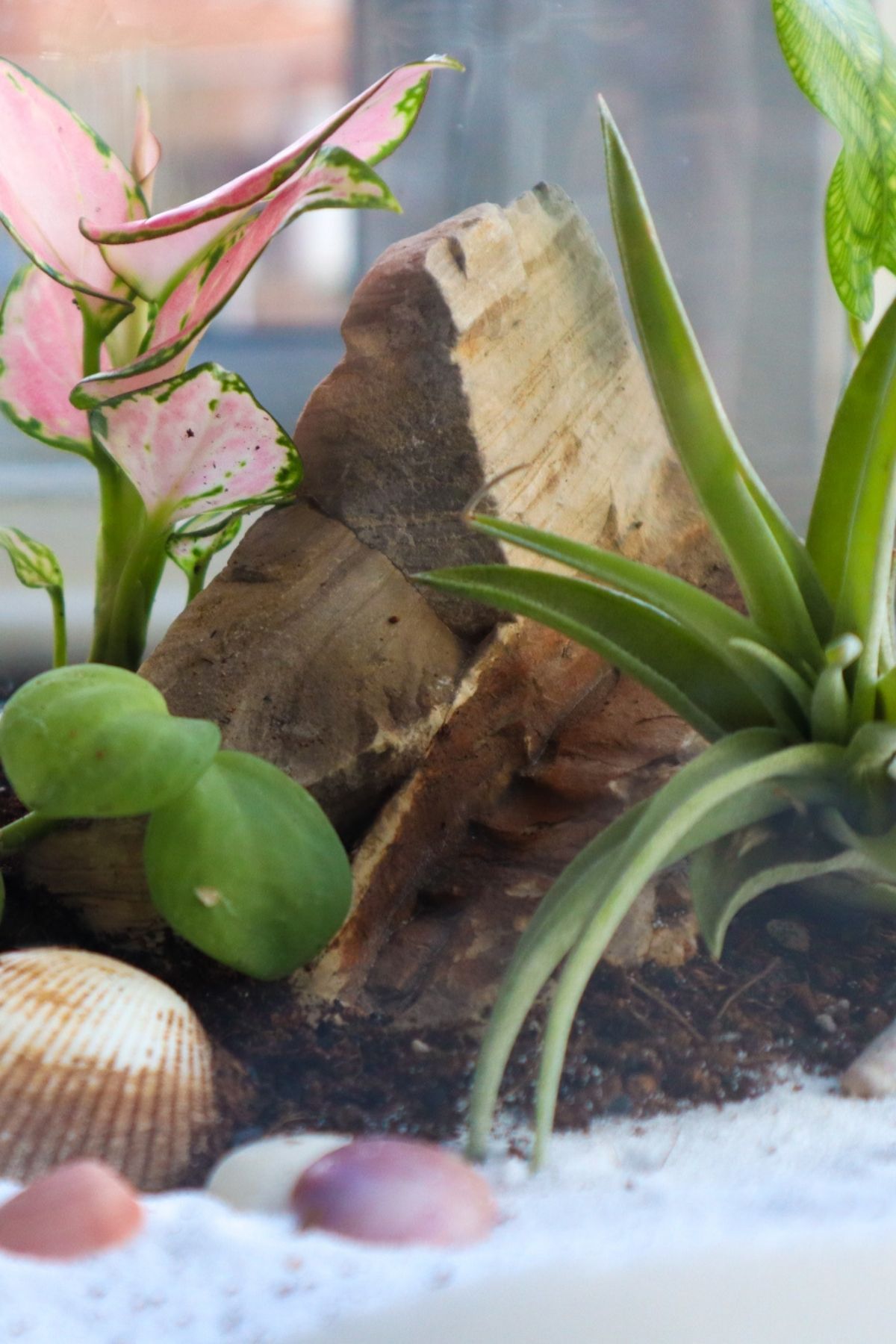
Honorary mentions: Pagoda Stone, Lava Rock, Petrified Wood, Elephant Skin Stone.
Terrarium Wood
You’re not out of the woods yet, there’s still plenty of hardscape to explore…
Here are three of the best terrarium wood/driftwood pieces:
1 | Manzanita Wood/Driftwood. If there were a prize for versatility, Manzanita would for sure take it. From thin twisting branches to chunky textured logs, there’s something for every terrarium within this wood.
Head to our Manzanita Wood deep-dive to learn more.
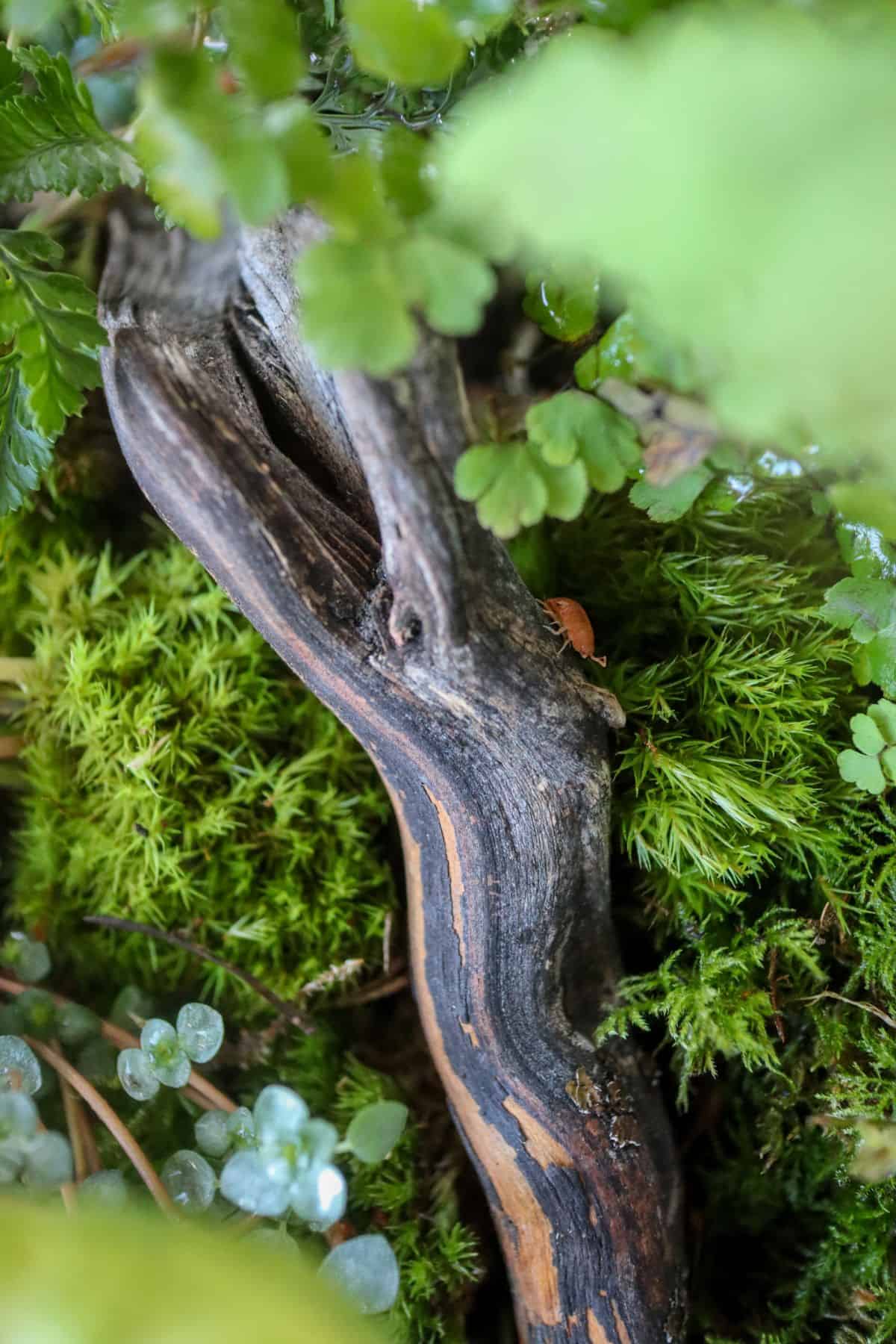
- 2 | Spider Wood. A fabulous gnarling softwood from the roots of the Rhododendron shrubs. While softwoods tend to decompose faster than hardwoods, this one holds up pretty well, provided that it’s properly prepared (more on that in a second).
Learn more about this unusual wood root in our Spiderwood Guide.

- 3 | Mopani Wood. This swirling, two-toned African hardwood isn’t just a pretty face. (Though it should be noted, it is absolutely gorgeous…) It’s also one of the most resilient woods for terrariums and vivariums you can get your hands on. Mold and rot have nothing on this wood.
Read more about the marvelous Mopani Wood.

👉 Shop our growing range of terrarium wood on our online store.
How to Use Hardscape
Sterilizing Your Rocks and Wood
The first thing you need to do before you pop your hardscape into your new terrarium or vivarium build is give it a good clean.
No nasties hitching a ride here, thank you very much.
First, you’ll need to take an old toothbrush to the problem and scrub off any excess dirt or debris.
Some people like to sterilize their hardscape before adding it. I can totally understand the extra thought and care if you’re adding it to an animal vivarium, but for your typical plant terrariums, I think sterilization is often unnecessary.
Provided you’ve sourced it from a shop and not directly from the forest…
Our manzanita wood, for example, is already washed and cleaned and ready to go. Is it completely sterile? No, but then terrariums aren’t sterile spaces.
If you did want to take extra care on terrarium wood specifically, the best way to sterilize wood is to boil the branches for 10-20 minutes in a pan. Just don’t boil it any longer, as some pieces could begin to break down.
Once it’s cooled and dried, you can pop it in your piece.
Styling Your Hardscape
In your creation, you can ultimately use your hardscape however you please. But here are some ideas to get you started.
- Use it as a centerpiece – place your item in the middle.
- Mix things up and use multiple pieces together.
- Put a larger piece in the background to frame and contrast the planting.
- Choose smaller pieces for a totally different aesthetic.
- Expand your horizons. How about using crystals, or bark?
- Make use of the nooks and crannies for epiphytic planting.
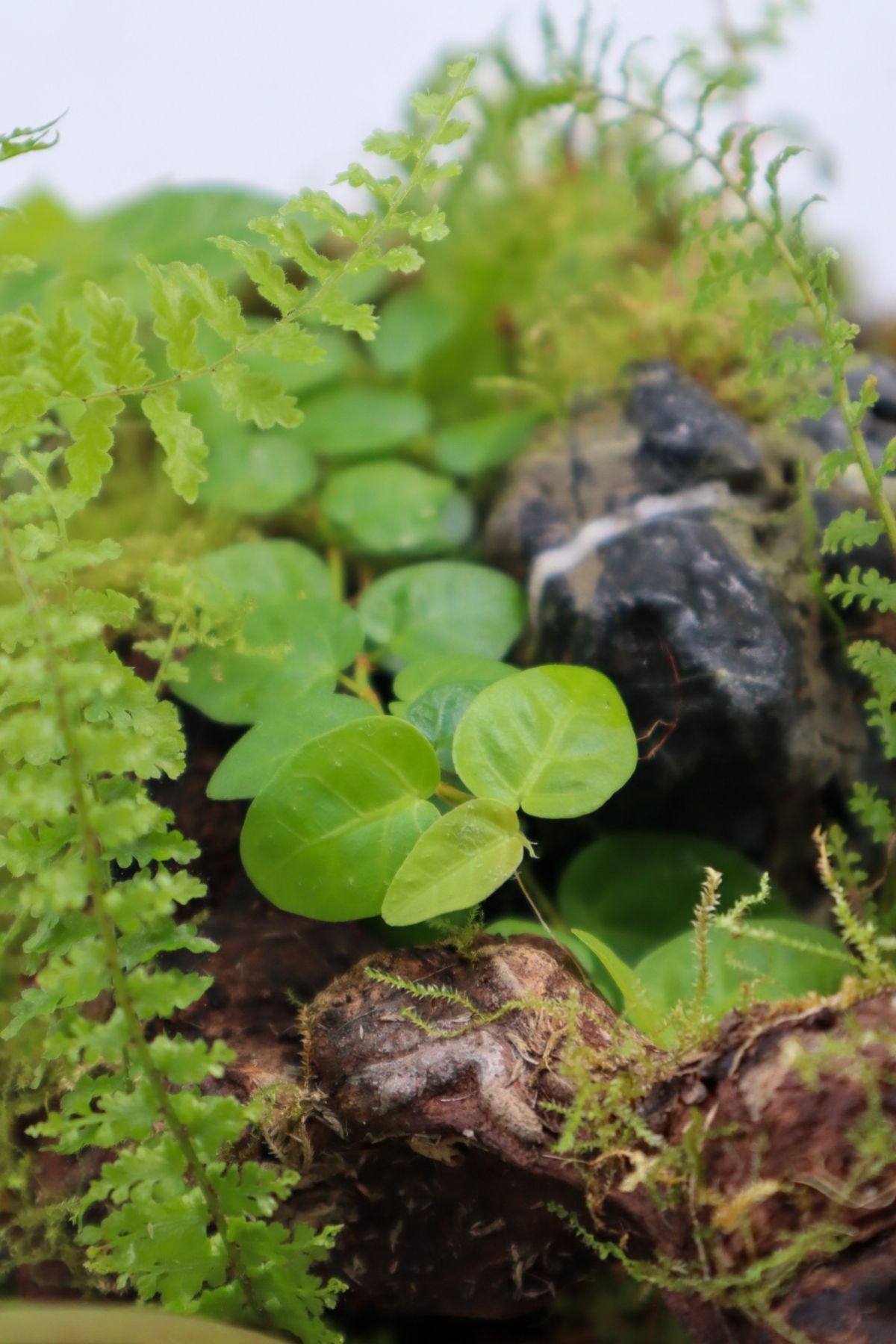
You Made It!
This ended up being quite the mammoth piece – thanks for sticking with me. What’s your favorite piece of hardscape? One I’ve mentioned, or one I’ve missed? Let me know in the comments!

Is there a way to test if the eroding rock will change the Ph quality of the soil?
Good question; I’m not entirely sure. Maybe you could test some water from the terrarium?